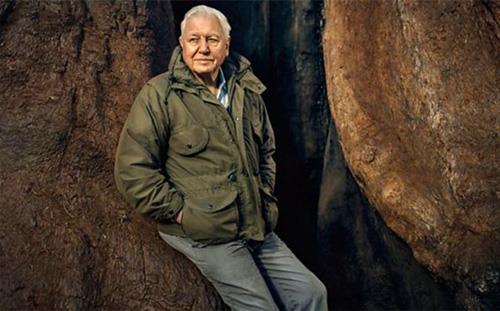
In just one day, one large tree can draw as much as 100 gallons of water from the surrounding ground and recycle it back into the air, in the form of life-giving water vapor. Trees provide food and shelter for wild animals in the area.
It should come as little surprise, then — though some TV watchers admit to being exactly that — that David Attenborough’s next landmark natural history series, The Green Planet, will be about trees, and how they quite literally provide the roots of life.
Attenborough’s stirring series Seven Worlds, One Planet has yet to air in the US — its BBC America debut is Jan. 18 — but the seeds have already been planted for Green Planet, which will air on TV at some time in 2021.
With this new series, though, Attenborough faces a new challenge. He will show, among other things, how some trees seem to “talk” to each other, such as the way certain willows will emit a chemical substance when attacked by parasitical webworms, alerting other willows in the area to produce a substance called tannin, which makes their leaves harder for webworms to digest.
Attenborough’s point is that while scientists know much about trees, little of that knowledge has passed on to the general public. Trees are something we collectively take for granted.
“This is a wonderful opportunity to explore a neglected yet truly remarkable part of the natural world,” Attenborough said this week in a statement prepared for the BBC. The Green Planet will be Planet Earth from the perspective of plants.
It’s designed to be “an immersive portrayal” of an unseen, largely hidden interconnected world, full of the kind of quirky behavior, gripping stories, and surprising heroes audiences have grown used to seeing in past Attenborough series like Blue Planet and Life on Earth. The idea is to take audiences into a world beyond the imagination, and see things, in the words of program producer and veteran Attenborough collaborator Mike Gunton, “no eye has ever seen.”
“The world of plants is a mind-blowing parallel universe, one that we can now bring to life using a whole range of exciting new camera technology,” Gunton said.
Filming locations range from Croatia and Costa Rica to the US and northern Europe and will encompass deserts and mountains, rainforests, and the frozen north. Attenborough will be at each location in person, guiding the viewer through what, for many, will be a brave new world.
Attenborough will meet the largest living things that have ever existed, in Gunton’s words, “…trees that care for each other, and plants that breed so fast they could cover the planet in a matter of months. He will find time-travelers — seeds that can outlive civilizations and plants that remain unchanged for decades. He will examine our relationship with plants, past, present, and future, and reveal how all animal life, ourselves included, is totally dependent on plants.”
Attenborough will turn 94 in May. “I’ve had the most extraordinary life,” he admits in the new Netflix documentary David Attenborough: A Life on Our Planet. “It’s only now that I appreciate how extraordinary.”